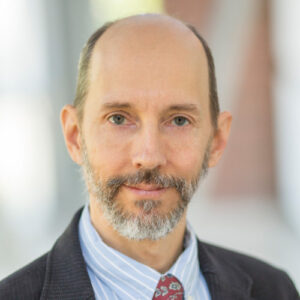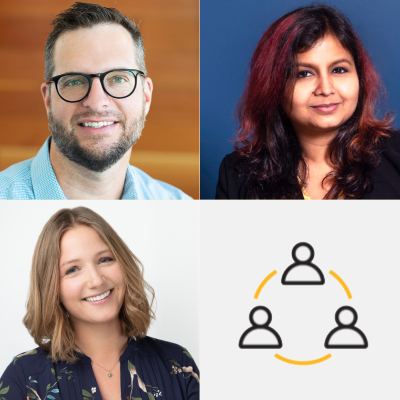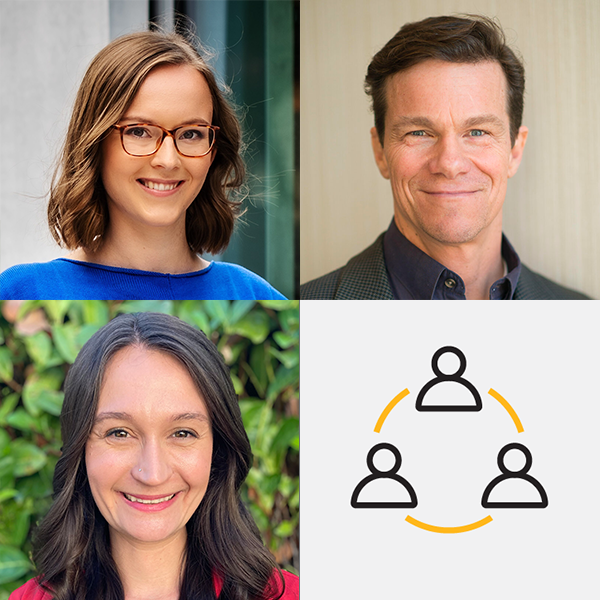What are you and your company doing to help reduce embodied carbon emissions?
Megan Stringer
Associate Principal/Sustainability Lead, Holmes Structures
I have always been fascinated by the built environment and how simple passive strategies can greatly reduce a structure’s environmental impact. As structural engineers, we play a big role in reducing the embodied carbon of the structures we design. At Holmes Structures (Holmes), I cut carbon emissions on projects by pushing for less impactful materials, and by implementing low-carbon concrete and life cycle assessments into everyday practice.
Over the past few years, Holmes has emerged as a leader of mass timber design along the West Coast, leveraging a renewable building material ahead of prescriptive code developments in the US. I recently led the design effort for one of the largest mass timber projects in North America—amassing ~350,000 SF of cross-laminated timber and slated to open in Silicon Valley this year. Our firm is spreading our sustainable practices among internal teams, and striving to extend our reach to clients and the larger AEC industry. As part of our commitment to doing more, Holmes is also a signatory of the SE 2050 Challenge
Outside of the workplace, I am active in the sustainable design community and currently chair the ASCE SEI and SEAOC Sustainable Design committees. Through both organizations, I educate the building industry on the role that structural engineers have in quantifying and reducing the environmental impacts of structural systems and the importance of disaster resilience. Through SEI, I am co-developing the SE 2050 Commitment Program in response to the CLF’s SE 2050 Challenge. Achieving Net Zero is not the job of one person, but rather the collective work of many. The SE 2050 Challenge brings the structural engineering community together to share resources and information crucial to reducing embodied carbon in our built environment.

Megan Stringer
Dirk Kestner
Principal and Director of Sustainable Design, Walter P Moore
In 2005, I was one of five structural engineers to form The Structural Engineering Institute’s (SEI) Sustainability Committee, the first national structural engineering committee focused on sustainable design. During the committee’s early years, we focused on educating our profession and publishing Sustainability Guidelines for the Structural Engineer, which contained a chapter on Life Cycle Assessment. In 2014 I became involved with Carbon Leadership Forum (CLF), and Walter P Moore became a sponsor shortly thereafter. At that time CLF was the only organization convening practitioners to share strategies to address embodied carbon.
Five years ago, my role transitioned from structural project manager to Walter P Moore’s Director of Sustainable Design. This role has allowed me to work with projects across our firm to address embodied carbon and incorporate lessons learned from our most sustainable projects into our base specifications and design processes. While performing Whole Building LCAs is part of this role, we are also developing internal benchmarking targets and interoperability tools that allow our BIM models to be better used to track, benchmark, and reduce embodied carbon as we design. We are expanding our approach beyond structural projects to assess the embodied carbon of site development and horizontal infrastructure projects. The structural engineering profession must continue to educate themselves, their peers, our clients, and others in the industry. We are proud to have joined other industry leaders as a pilot sponsor of the EC3 tool and are encouraged to see how it is bringing transparency to supply chain emissions.
It is encouraging to see the increasing awareness of the importance of embodied carbon and the growth of CLF through local hubs. CLF, while now larger and more diverse, remains the community for rigorous discussion and incubation of ideas to address the crucial issue of embodied carbon.

Dirk Kestner
Kelsey Rose
Sustainability Team Lead and Senior Design Engineer, Magnusson Klemencic Associates
Although I am relatively new to the sustainability sector of the building industry, it has become my greatest personal focus as a structural engineer at Magnusson Klemencic Associates (MKA). After helping to reestablish MKA’s Sustainability Technical Specialist Team (TST), I became its leader in 2018 and now direct MKA’s research into the latest technologies, standards, and issues related to sustainability. One of the most exciting projects of late has been our involvement in the creation and launch of the Embodied Carbon in Construction Calculator (EC3) Tool. As pilot sponsors, MKA was engaged from the beginning to test and use the tool, allowing us the unique opportunity to help shape its development. MKA now promotes the use of EC3 on all US projects, hoping its widespread use will be a catalyst for market change and increased product transparency.
I believe that as stewards of the environment, it is our responsibility to educate the building sector as much as possible, so the entire OAEC community advances collectively. This vital external education of clients, architects, and other engineers has become a target for 2020. As part of this effort, I am involved in the SE 2050 working group of the Structural Engineering Institute’s (SEI) Sustainability Committee. The SE 2050 Commitment is SEI’s response to the SE 2050 Challenge formally issued by the Carbon Leadership Forum in 2019. Our mission is to unite structural engineers around the country to collaboratively support the larger professional community in the goal of net-zero embodied carbon structural systems by the year 2050.

Kelsey Rose
Mark D. Webster
Senior Consulting Engineer, Simpson, Gumpertz & Heger
As a structural engineer, most of my activity around embodied carbon centers on the Sustainability Committee of the Structural Engineering Institute, which I co-chair with Megan Stringer. Having spent about 25 years studying and publicizing the embodied impacts of structural materials without much headway in the industry, I am grateful and relieved that the collective efforts of a small group of committed adherents has finally resulted in the “hallelujah” moment we now find ourselves in, and for the rise of the CLF to spread the good word to the masses.
The SEI Sustainability Committee is tackling climate change on several fronts. Most recently our SE 2050 Working Group under the dedicated leadership of Michael Gryniuk graduated to a full-fledged Sub-Committee. The SE 2050 group is working to bring the CLF-incubated challenge to reduce the net carbon emissions of structural systems to zero by 2050 to structural engineers across the nation. I head the Sustainability Committee’s Carbon Working Group which published a technical report, Structural Materials and Global Climate, in 2017 and has since been supporting the SE 2050 effort by publishing a well-received white paper, Achieving Net Zero Embodied Carbon in Structural Materials by 2050, and is currently developing other resources to help structural engineers and others understand and reduce the embodied carbon of their projects.
I’m also working with our engineering staff at Simpson Gumpertz & Heger to develop and streamline procedures for rapidly and efficiently extracting structural material quantities for our design projects and calculating the associated embodied carbon so that we can routinely track it. I’m implementing embodied carbon reduction strategies on projects and consulting with outside project teams on how to make such reductions.
It’s a great time to be a structural engineer because we have the knowledge and the skills to make changes in how buildings are constructed and renovated that will improve the lives of our planet’s billions of occupants by mitigating the worst impacts of climate change. It’s enormously satisfying and rewarding to be able to contribute to these changes.

Mark D. Webster







